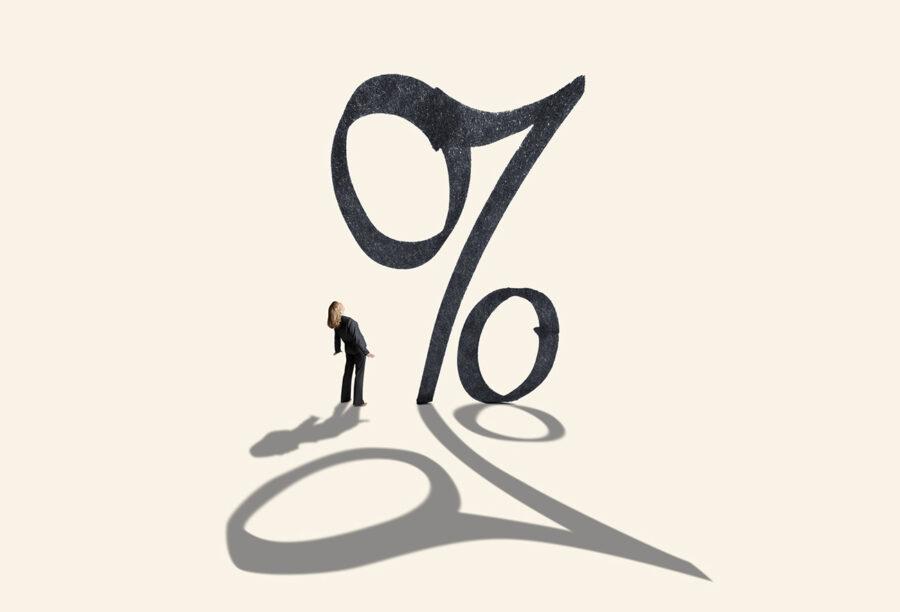The higher-than-expected June 2022 inflation of 9.1% over that of a year ago may not yet push the Federal Reserve to go for a 100-basis-point rate increase when it meets next on July 26–27, according to experts at Wharton. The economic slowdown triggered by monetary tightening may lead the Fed to feel less pressure to continue on an aggressive path, they noted.
The last rate increase in June was 75 basis points, lifting the interest rate to a range of 1.5%–1.75%. That was the largest one-time increase since 1994, as the Fed attempted to tame inflation breaching 40-year records.
A 100-basis-point rate increase “is definitely on the table, but I don’t think it’s likely,” Wharton finance professor Nikolai Roussanov said on the Wharton Business Daily radio show on SiriusXM. (Listen to the full podcast above.) “But if we continue seeing above-expectation [inflation] over the summer, it cannot be ruled out.” He said the Fed is “most concerned about core inflation” — inflation for all items less food and energy. Core inflation growth edged down slightly to 5.9% year-over-year in June compared to 6% in May, but it was still worrisome, he noted.
Inflation Outlook Tamer?
According to Jeremy Siegel, Wharton professor of finance emeritus, the Fed’s monetary tightening efforts thus far have yielded much of the desired effects. “Most of our inflation is behind us,” he said on CNBC last week. That should persuade the Fed to avoid getting more aggressive with the next interest rate hike, he suggested. “They’ll do 75 (basis points), and they have to turn around because the economy is really slowing. We’re in a recession. We’ve slammed on the monetary brakes — the money supply, deposits in banks — to absolutely flatten it out.” He said the resulting, unprecedented slowdown in liquidity “is dramatic.”
Siegel pointed out that already, gasoline prices have fallen, and housing has absorbed a 20% increase in rents and prices. He noted that the latest inflation data records a much lower increase of 5.6% annually for the shelter index; he blamed that on the government’s lag in the statistics recording housing inflation. “So, the printed numbers will remain bad, even though the actual numbers are getting much better,” he said.
“If the Fed sees [a significant] pullback on the consumer side, they might decide that they don’t need to be too aggressive.” — Nikolai Roussanov
Christopher Waller, a member of the Federal Reserve’s Board of Governors said in a speech that he would “lean towards a larger hike” of 1 percentage point if the June retail spending report was stronger than expected. Federal Reserve Bank of Cleveland President Loretta Mester said in a Bloomberg interview that while the latest inflation report supported a rate increase of at least 75 basis points, the June retail spending report and the University of Michigan’s consumer survey would help clarify if a bigger rate increase was warranted.
As it happened, retail spending in June was stronger than expected. Last Friday, the Commerce Department reported a 1% increase in spending on retail and food services between May and June 2022 to $680.6 billion, which was 8.4% above that of June 2021. The widely watched University of Michigan Consumer Sentiment Index also improved a notch to 51.1% for July 2022 from 50% for the previous month, although it was a ways off from the 81.2% of a year ago. The UMich survey also found that consumers’ inflation expectations for the year ahead at 2.8% were lower than the 2.9–3.1% range of the preceding 11 months.
According to Roussanov, the Fed’s rate decision will ultimately depend on the degree of the economic slowdown. “If the Fed sees [a significant] pullback on the consumer side, they might decide that they don’t need to be too aggressive,” said Roussanov. “But if they see consumer demand staying strong, and hiring staying strong, it’s quite possible that they will be more aggressive.”
According to Siegel, data on economic activity will bring more clarity than inflation data. “The more important data will be the real data on economic activity. That’s going to be more sensitive,” he said. The Consumer Price Index is “backward-looking” and “stubbornly high,” he added. He pointed out that if the economy continues to slow the way it has and if money supply growth stays flat, the Fed will have evidence that it has tamed inflation.



